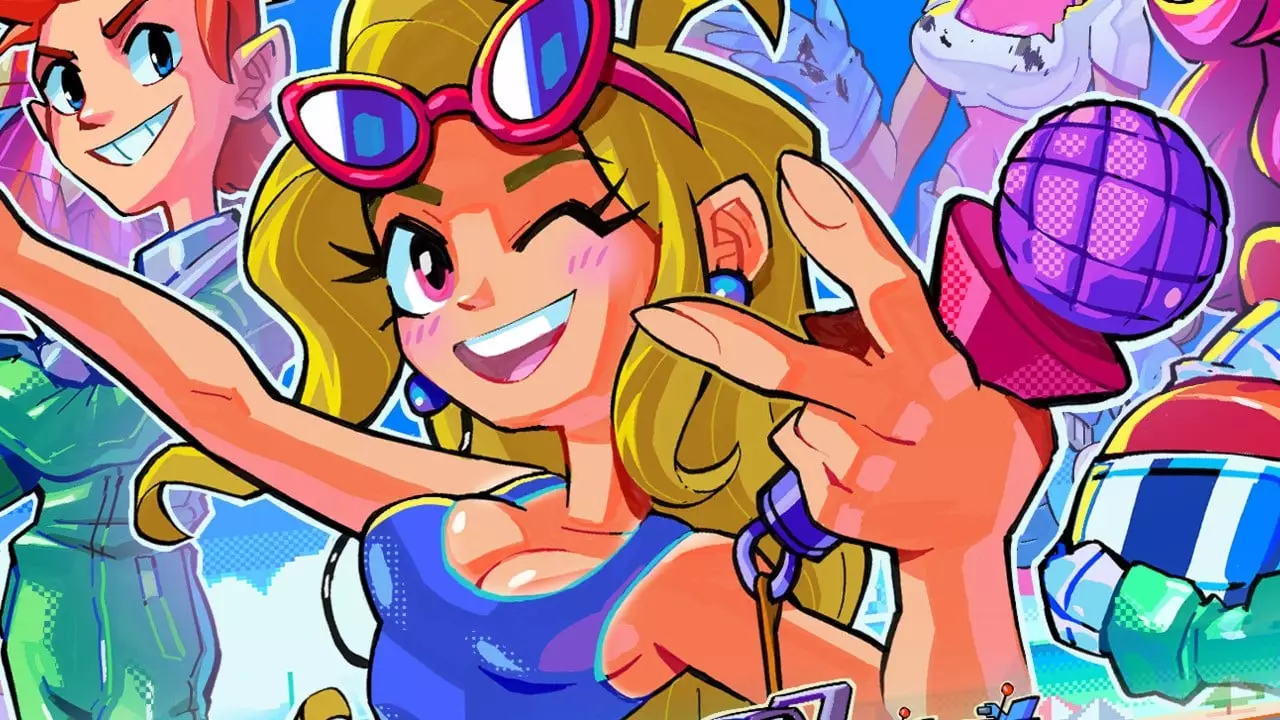In 2020, when Victory Heat Rally was announced on Kickstarter, many gamers felt a surge of excitement as the title seemed poised to encapsulate the nostalgic essence of Sega’s Super Scaler arcade games from the 1980s. This genre of games, particularly titles like Power Drift, showcased an innovative visual style that pushed the boundaries of 3D graphics at the time. Fast forward to the game’s Switch release four years later, and it’s evident that what initially promised a vivid homage has fallen short of its grand ambition. While there’s no denying the game’s visual charm, it’s worth dissecting how the final product feels like a departure from its roots.
Visual Disappointment with a Retro Flair
The visual aesthetic of Victory Heat Rally certainly leans into a retro appeal, with cel-shaded graphics that attempt to evoke the nostalgic feel of classic arcade racers. However, instead of the segmented tracks reminiscent of rollercoaster rides found in the original Super Scaler games, we are presented with more conventional 3D race tracks that, despite their attractive design, evoke doubts about their purposefulness. Instead of the vibrant, frenetic courses that would make for exciting circuits, the environments feel pedestrian and lack the exhilarating flair that one would expect from a title set to homage such influential games. The player’s vehicle appears as a large pixelated sprite dashing through what is fundamentally a standard polygonal setting. It’s an interesting visual dichotomy but raises questions about the promise of innovation that was initially present.
The core mechanic in Victory Heat Rally revolves around the drifting system, designed to boost your speed based on how long and effectively you maintain the drift. While this offers a straightforward entry point for new players, it also reveals a glaring issue: the lack of depth in the gameplay. The drift mechanic, though functional and easy to master, quickly establishes a repetitive cycle that diminishes excitement. Players can expect to grasp the game mechanics within just a few races, but therein lies the problem—once you’ve mastered that one mechanic, the thrill starts to wane.
The Championship mode, which spans between five to six hours, strives to inject variety through a combination of lap-based races and side missions, such as cone destruction challenges. However, the underlying monotony seeps through, as tasks begin to feel like variations of the same routine. As visually pleasing as the game may be, it struggles to keep players engaged beyond initial hours, reiterating the point that fresh mechanics are integral to sustaining interest in a racing game.
Victory Heat Rally does offer the option to engage in split-screen multiplayer races with up to four players. This inclusion is undeniably a treat, especially as the game’s simplistic art style proves beneficial in ensuring clarity across screens. The chaotic thrill of racing against friends can certainly generate a fun atmosphere, translating to a more engaging experience than solo play. However, this social component does not transform the game into a long-term contender, as the excitement fades once the novelty of multiplayer wears off.
Facing a Crowded Field
As the Nintendo Switch ages, an increasing number of racing titles, particularly those infused with retro aesthetics, vie for attention. In this competitive arena, Victory Heat Rally positions itself admirably but lacks the essential ingredients to claim a top-tier status. While the game is not devoid of enjoyment—players will likely find satisfaction during their time with it—there’s a pervasive sense that it doesn’t stand out amidst a sea of alternatives. The absence of distinctive features and the game’s reliance on elementary mechanics means it is unlikely to entice players back after the Championship has been completed.
Ultimately, while Victory Heat Rally captivates with its visuals, the delightful facade begins to crumble under scrutiny. The removal of the original Super Scaler-inspired art style seems emblematic of a game that had the potential to be transformative but ended up playing it safe. It’s a title that, despite its charm, lacks the innovation and depth necessary to revolutionize the genre or secure a lasting place in players’ hearts. Once the initial thrill fades, it becomes evident: while the game is enjoyable, it remains a fleeting engagement lost in a crowded racing landscape.

